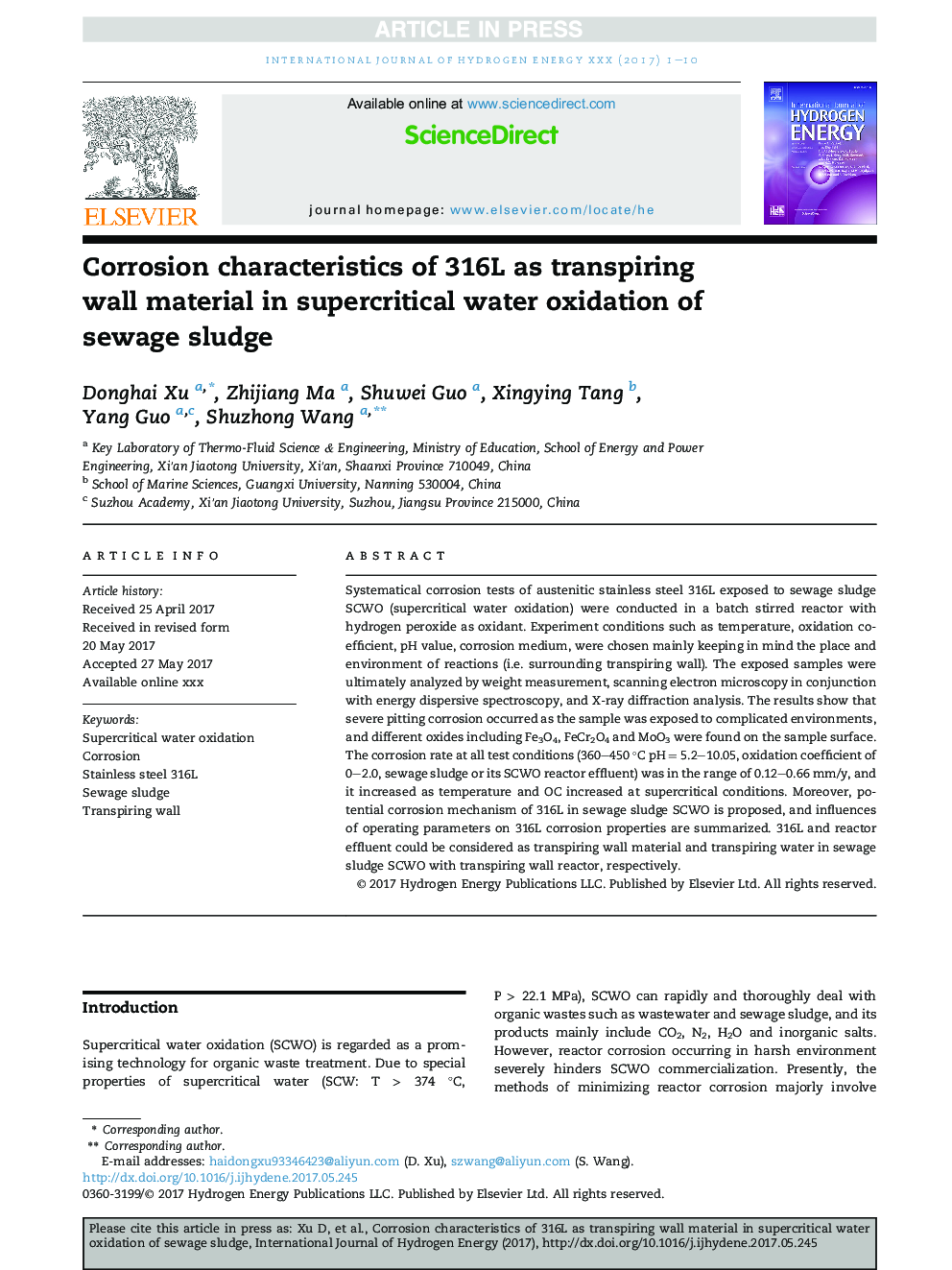| Article ID | Journal | Published Year | Pages | File Type |
|---|---|---|---|---|
| 5146618 | International Journal of Hydrogen Energy | 2017 | 10 Pages |
Abstract
Systematical corrosion tests of austenitic stainless steel 316L exposed to sewage sludge SCWO (supercritical water oxidation) were conducted in a batch stirred reactor with hydrogen peroxide as oxidant. Experiment conditions such as temperature, oxidation coefficient, pH value, corrosion medium, were chosen mainly keeping in mind the place and environment of reactions (i.e. surrounding transpiring wall). The exposed samples were ultimately analyzed by weight measurement, scanning electron microscopy in conjunction with energy dispersive spectroscopy, and X-ray diffraction analysis. The results show that severe pitting corrosion occurred as the sample was exposed to complicated environments, and different oxides including Fe3O4, FeCr2O4 and MoO3 were found on the sample surface. The corrosion rate at all test conditions (360-450 °C pH = 5.2-10.05, oxidation coefficient of 0-2.0, sewage sludge or its SCWO reactor effluent) was in the range of 0.12-0.66 mm/y, and it increased as temperature and OC increased at supercritical conditions. Moreover, potential corrosion mechanism of 316L in sewage sludge SCWO is proposed, and influences of operating parameters on 316L corrosion properties are summarized. 316L and reactor effluent could be considered as transpiring wall material and transpiring water in sewage sludge SCWO with transpiring wall reactor, respectively.
Related Topics
Physical Sciences and Engineering
Chemistry
Electrochemistry
Authors
Donghai Xu, Zhijiang Ma, Shuwei Guo, Xingying Tang, Yang Guo, Shuzhong Wang,
